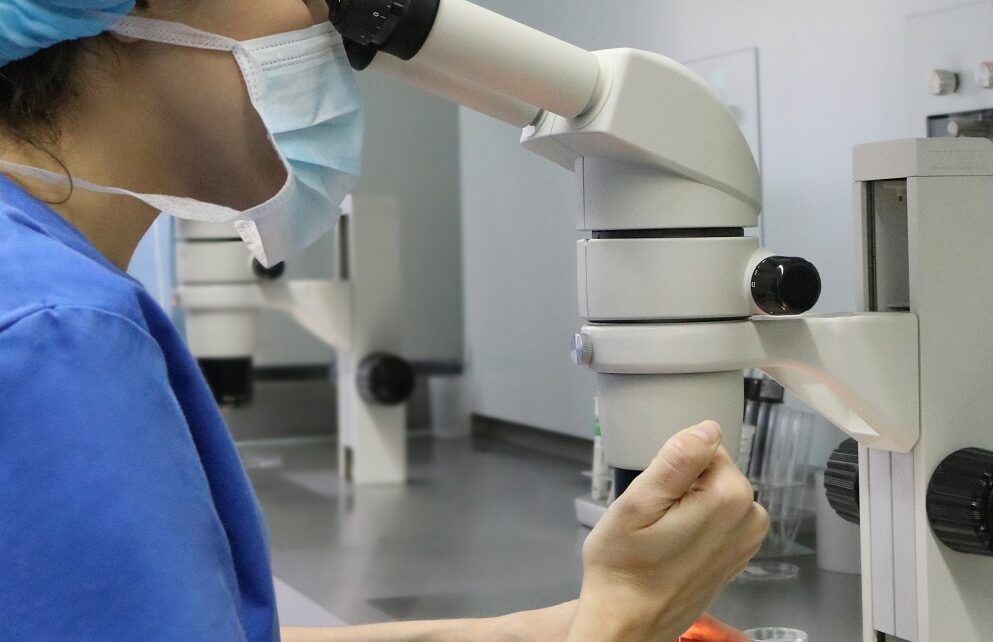
What is the embryologist role in the in vitro fertilization (IVF) treatment?
The retrieval of the oocytes from the follicular fluid marks the beginning of a series of events the purpose of which is to achieve a pregnancy and a later birth of a healthy baby. This is also the beginning of the technical work of the IVF laboratory embryologists. Before every cycle, we thoroughly study each clinical history and prepare the culture plates and media that the embryos and gametes of each patient will need.
Índice
What does the embryologist do on the follicular puncture day?
On the day of the follicular aspiration, we look for the oocyte-corona-cumulus complexes present in the follicular fluid. Then, we carefully wash, separate and place them in the corresponding culture plate until the next stage of insemination. The possible insemination methods are the Conventional IVF (cIVF) method or the Intracytoplasmic sperm injection (ICSI).
Once the embryo starts to develop, what is the following step?
On day 1 of embryo development, we check if the fertilization performed the day before has been successful. In order to confirm this, two polar bodies and two pronuclei should be clearly seen. These findings are key for a proper assessment of the zygote. Furthermore, each embryo is studied one by one during the following stages of development by assessing: number of cells and division speed, degree of cell fragmentation, visualization of the number of nuclei, alterations in the zona pellucida as well as the appearance and shape of the cells. Moreover, each embryo is graded taking into account its morphologic characteristics. These parameters help us to estimate the probability of an embryo reaching blastocyst stage and producing a pregnancy.
When transfer time comes, what is our embryologists role?
At our laboratory, the embryo transfer procedures are generally performed at blastocyst stage, day 5 or 6 of embryo development. This is due to the fact that this phase allows a better embryo selection and offers a high implantation rate. An embryo at this stage has a complex structure as it is composed of a high number of cells, organized in a specific and well-differentiated manner.
The embryologists we are also in charge of the vitrification and thawing of the embryos on day 5 or 6 of embryo culture, the vitrification and thawing of the oocytes as well as the embryo biopsy on day 5 or 6. The latter is a specific technique to assess the genetic and chromosomal status of an embryo. Finally yet importantly, we are also always available to solve any doubts that both our patients and co-workers may have, since teamwork plays a crucial part not only at the laboratory but also at the IVF clinic as a whole.
Mónica Aparicio, a biologist at Instituto Bernabeu
IT MAY ALSO BE OF INTEREST TO YOU
- In vitro fertilization at Instituto Bernabeu
- Embryo transfer
- Criteria for embryo classification
- Pre-implantation genetic diagnosis or testing (PGD/PGT) Embryo normal and abnormal division
- ICSI. Intracytoplasmic Sperm Injection
